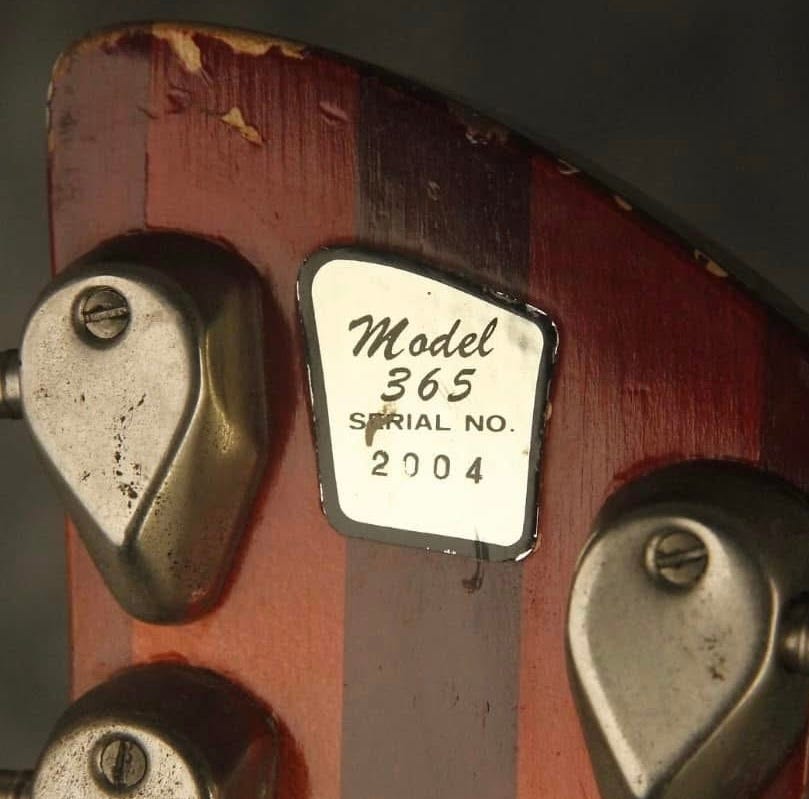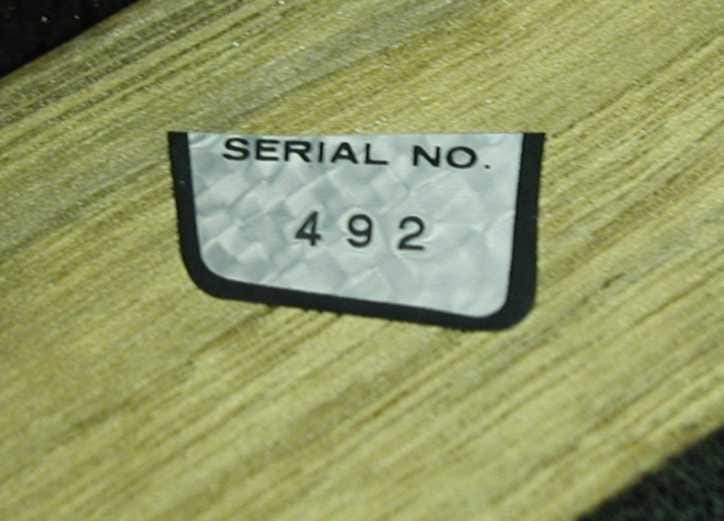So there aren’t a huge number of true mysteries out there, but here’s one of them. This is what we DO know. We know that a handful of 330s exist that, based on features and pot codes, were probably produced in 1965, and these guitars do not have a serial number stamped into the jackplate. Instead, on the back of the headstock, they have this sticker:

The sticker was clearly produced especially for this application, and it is applied underneath the finish. We don’t know how many of these guitars there are, but we know serial number 4501 and 4510 exist so there are probably at least ten. Four of them are on the register, including this one.
We also know that at least one 365 exists with a similar serial number label, and a different serial number range.

We also know that in a “waste not, want not” spirit, these labels later had the preprinted model number lopped off and were reused in Transonic amps.

And that is a complete list of everything we know. It’s not much! But now we can begin speculating about their purpose.
You’ll find three basic theories floating around out there: these are trade show guitars, prototypes, or a serial numbering experiment. Let’s run them down.
Trade show guitars makes sense on the face of things—there wasn’t any other model identification on the guitars, makes sense to help people understand what they’re looking at. But the fact that it’s only 330s (and as many of them as there are) and one 365 that have surfaced after all this time make that seem unlikely to me.
Prototypes are explanation number two, and…I’m not buying it. Externally, these are bog standard 1965 330s. Could there be something structural going on under the hood? Sure. But ten of them? And our random 365? And remember, these stickers were custom made—these are not off the shelf jobs. If they were to denote prototypes, wouldn’t they be more generic and NOT have the model number preprinted on them? No, I reject this theory.
Which leaves “serial number method experiment” as our remaining option. This one makes sense. A sticker is faster, cheaper, and easier than hand stamping. Even John Hall—who doesn’t know the real story either—tends to lean this way:
“This is pretty close to my recollection. I remember that the company bought a raft of those then new-fangled IBM Selectric typewriters, the ones with the type ball, and foil labels that those could emboss were used for all sorts of things around the shop.”
So was it just an experiment that didn’t “take”? Is the simplest answer the best one? I tend to think so. We’ll probably never know for sure. But if you find a guitar with a sticker like this and no number on the jackplate…it’s legit!




The more I didn’t know! What next?